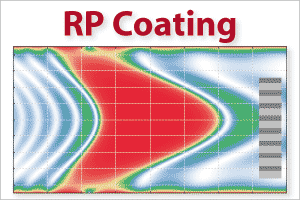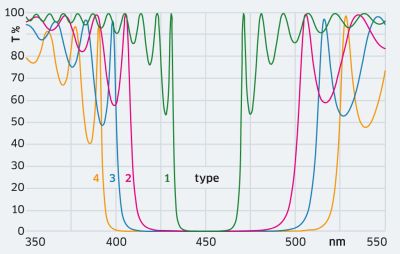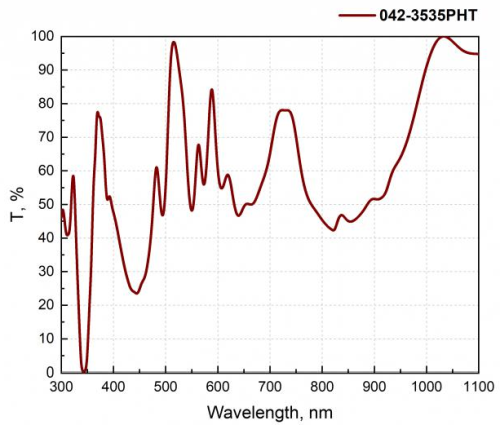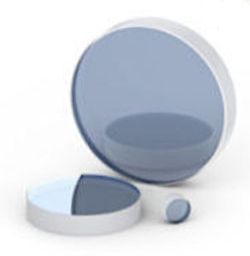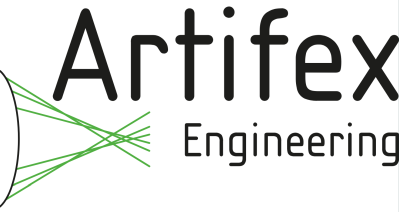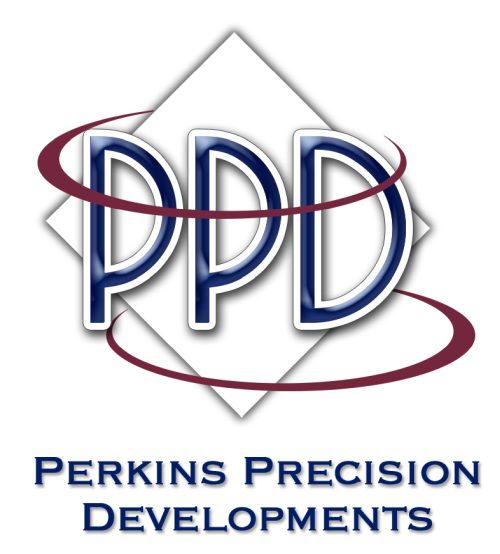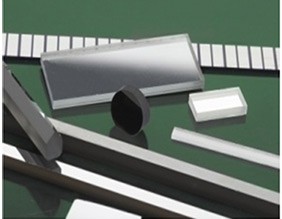laser mirrors (original) (raw)
Definition: high-quality mirrors used in laser resonators and other optical setups
Categories:  photonic devices,
photonic devices,  laser devices and laser physics
laser devices and laser physics
- mirrors
- metal-coated mirrors
- dielectric mirrors
- dispersive mirrors
- Bragg mirrors
- crystalline mirrors
- first surface mirrors
- parabolic mirrors
- variable reflectivity mirrors
- deformable mirrors
- laser mirrors
* output couplers - laser line mirrors
- fiber loop mirrors
- semiconductor saturable absorber mirrors
- supermirrors
- (more topics)
Related: mirrorsmirror substratesdielectric mirrorsdielectric coatingsdichroic mirrorslaser resonatorsoutput couplerssupermirrorsLasers Attract Dust to Cavity Mirrors
Page views in 12 months: 1699
DOI: 10.61835/ab0 Cite the article: BibTex BibLaTex plain textHTML Link to this page! LinkedIn
Content quality and neutrality are maintained according to our editorial policy.
📦 For purchasing laser mirrors, use the RP Photonics Buyer's Guide — an expert-curated directory for finding all relevant suppliers, which also offers advanced purchasing assistance.
Contents
What are Laser Mirrors?
The resonator of a laser contains mirrors, which must meet a number of criteria, in particular
- low reflection losses (for highly reflecting mirrors), or (for output couplers) a well-defined transmittance in a certain wavelength range
- high optical quality (good flatness over large area, low microscopic roughness) of the surface (avoiding wavefront distortions which could deteriorate the beam quality)
- good resistance against high optical intensities to avoid laser-induced damage (particularly in Q-switched lasers), i.e., a high damage threshold
In almost all cases, dielectric mirrors based on multilayer structures (mostly quarter-wave mirrors) are used as laser mirrors. (The article on dielectric coatings presents some details on the fabrication of dielectric laser mirrors.) Normally, one of the mirrors, which is used as output coupler, has a significant transmission for the laser radiation, whereas all other mirrors are highly reflecting (e.g. with > 99.9% reflectance). Some mirrors can also be made as dichroic mirrors, allowing the injection of pump light into the gain medium of an end-pumped laser. (For some quasi-three-level lasers, the requirements on such dichroic mirrors can be demanding due to a close proximity of pump and laser wavelength.)

Figure 1: Dielectric laser mirrors. The photograph has been kindly provided by EKSMA OPTICS.
Of course, laser mirrors can also be used to reflect light outside the laser resonator. For example, it is common to use a pair of steering mirrors, each deflecting the beam by ≈ 90°, for sending a laser beam into some apparatus. The mirror mounts of the steering mirrors typically have two or three adjustment screws, which make it possible to adjust the virtual origin and direction of the beam.
Surface Quality
For most laser mirrors, the surface quality in terms of the density of localized imperfections is particularly important. This is mostly to avoid beam distortions, particularly in lasers designed for diffraction-limited output beam quality. As explained in the article on mirrors, the surface quality is often quantified with “scratch & dig” specifications according to the US standard MIL-REF-13830B, or alternatively in a more rigorous fashion based on ISO 10110-7.
Besides, one often quantifies the tolerances for surface irregularity, which is relevant for preserving wavefronts; for example, a ($\lambda / 2$) irregularity may be sufficient for some lasers, while ($\lambda / 8$) or better is needed for others. Note, however, that meaningful specifications require some more information — in particular:
- It is important to know whether the values refer to the surface or to the wavefronts upon reflection, since the resulting wavefront errors are twice as large.
- One needs to know whether specified numbers are peak-to-peak or r.m.s. values.
- Further, it is of interest whether the numbers are typical or guaranteed worst-case values.
Damage Threshold
Mostly for Q-switched lasers, the threshold for laser-induced damage is important. Some laser designs, involving particularly high optical intensities on resonator mirrors, work only with mirrors having a particularly high damage threshold. That can be achieved by choosing appropriate coating materials in conjunction with high-quality fabrication processes. Note that even for given materials, the damage threshold can be substantially reduced by impurities or microscopic defects.
Residual Transmission
Even highly reflecting laser mirrors exhibit some residual transmission. Particularly for high-power lasers, this can lead to additional output beams with substantial powers, which are sometimes used for diagnostic purposes, such as for monitoring the laser power without using a part of the output beam. However, problems can arise from the nonuniformity of the residual transmission, which can be strong for highly reflecting mirrors.
Designing Laser Mirrors
For designing mirror coatings, a flexible simulation and design software is indispensable. It must not only be able to calculate all relevant optical properties for a given design, but assist you in finding a suitable design for achieving given target properties. The RP Coating software is an ideal tool for such work, as it is particularly flexible. For example, you can define a figure of merit, formulating the optimization goal, of any conceivable kind.
Dichroic Properties
Many laser mirrors simply need to be highly reflecting at the laser wavelength. In some cases, however, one needs additional properties, for example high transmittance for pump light at a shorter wavelength. One then needs to use dichroic mirrors with a more sophisticated thin-film design. For example, Figure 2 shows the reflectance spectrum of a short-pass mirror, which could be used for an end-pumped Nd:YAG laser: pump light at 808 nm, for example, is well transmitted, while laser light at 1064 nm is fully reflected.

Figure 2: Reflectance curve of a dielectric edge filter with high transmittance below 980 nm and high reflectance above 1030 nm.
In other cases, it is necessary to have high resonator losses at unwanted laser lines. For example, a Nd:YAG laser can be forced to operate at 946 nm if the stronger laser line at 1064 nm is sufficiently suppressed by high transmissivity of at least one mirror in the resonator.
Mirror Substrates
Usually, laser mirrors are fabricated based on mirror substrates made of some glass (e.g. BK7 or fused silica) or glass ceramics, but it is also possible to deposit mirror coatings directly on a laser crystal (or glass), e.g. for monolithic lasers. Typical mirror substrates are of cylindrical shape, with a diameter of e.g. 1 inch (≈ 25.4 mm) or 0.5 inch, and a thickness of e.g. 6 mm. Even for highly reflecting mirrors, some substrate properties can be important, in particular the surface quality, but also high stiffness, a low thermal expansion coefficient and/or a high thermal conductivity (to avoid thermal bulging in high-power lasers). For partially transmitting mirrors, it can also be important to have a high optical homogeneity (to avoid beam distortions for the transmitted light) as well as low absorption and scattering losses.
Mirror substrates may have curved surfaces, leading to focusing or defocusing laser mirrors. The effective focal length is one half the curvature radius, assuming normal incidence. For strong curvature, e.g. with a radius of curvature well below 10 mm, it can be difficult to obtain high-quality mirror coatings. Some specialists can make good mirrors with radii of the order of 1 mm.
For more details, see the article on mirror substrates.
Mounts for Laser Mirrors
Laser mirrors are often placed on adjustable mounts (see Figure 2). By turning two or three adjustment screws, one can align a laser resonator, for example. High-quality mounts allow for stable mounting while applying little mechanical stress to the mirror substrate, and exhibit a long-term stable mirror orientation with little influence of temperature changes.

Figure 3: A laser mirror as part of a diode-pumped laser is placed on an adjustable mirror mount. The adjustment screws allow one to align the laser resonator. Source: Cutting Edge Optronics.
Special Mirror Types
Special types of dielectric mirrors such as chirped mirrors (or other kinds of dispersive mirrors) can also provide a suitable amount of chromatic dispersion in the resonator of a mode-locked laser. It may then be possible to avoid the use of, e.g., a prism pair and thus to construct fairly compact femtosecond lasers.
There are also supermirrors with extremely low reflection losses, but these are rarely used in laser resonators, but rather for special applications such as building resonators with very high Q-factor.
Metal-coated mirrors, such as silver mirrors, are normally not suitable for laser resonators because they have substantially higher reflection losses and are also not suitable as output couplers. Further, they tend to oxidize on the surface and thus to lose surface quality and reflectance. However, CO2 lasers usually require metal-coated first surface mirrors, e.g. with a gold coating on a copper substrate. There are also some other kinds of first surface mirrors which are suitable for use in laser resonators.
Frequently Asked Questions
This FAQ section was generated with AI based on the article content and has been reviewed by the article’s author (RP).
What are the essential requirements for a laser mirror?
A laser mirror must have precisely defined reflection and transmission properties, high surface quality to avoid wavefront distortions, and a high damage threshold to withstand intense laser light, particularly in pulsed lasers.
Why are dielectric mirrors typically used for lasers?
Dielectric mirrors are preferred because their multilayer structures can achieve extremely high reflectance (>99.9%) with very low absorption, leading to minimal losses and a high threshold for laser-induced damage.
What is an output coupler?
An output coupler is a partially transmissive mirror in a laser resonator. It reflects most of the light to sustain the lasing process while transmitting a specific fraction to form the usable output laser beam.
What is a dichroic laser mirror?
A dichroic mirror is designed to have different reflection and transmission properties for different wavelengths. It is often used to transmit pump light into a gain medium while strongly reflecting the laser wavelength.
Why is the laser damage threshold of a mirror important?
The laser damage threshold is critical, especially for Q-switched lasers, because the optical intensities inside the laser resonator can be extremely high. A mirror with an insufficient damage threshold can be quickly destroyed by the laser beam.
Can laser mirrors have curved surfaces?
Yes, many laser mirrors have a curved (typically spherical) surface. Such mirrors have focusing or defocusing properties and are essential for creating stable laser resonators and controlling the laser beam's mode size.
Are metal-coated mirrors used in lasers?
Generally not, because their reflection losses are much higher than those of dielectric mirrors. A key exception is CO2 lasers, which often use metal-coated first surface mirrors, such as gold-coated copper mirrors, due to the long operating wavelength.
Suppliers
Sponsored content: The RP Photonics Buyer's Guide contains 133 suppliers for laser mirrors. Among them:
⚙ hardware
LASEROPTIK can produce a wide range of laser mirrors with high reflectivity (HR) or partial reflectivity at given wavelength. We can also make specialty mirrors, e.g. with extremely broad reflection bands.
We use different coating technologies depending on your detailed requirements.
⚙ hardware
Our Femtoline laser mirrors are designed to be used in femtosecond laser applications with fundamental wavelengths of Ti:sapphire and Yb:KGW/KYW lasers and their doubled, tripled or quadrupled frequencies. Nd:YAG laser mirrors are designed for the Nd:YAG laser fundamental wavelength and its harmonics: 1064 nm, 532 nm, 355 nm, 266 nm.
⚙ hardware
Dielectric mirrors for most standard laser wavelengths and their harmonics at angle of incidence 0° or 45° with different dimensions are available from stock. They feature high laser-induced damage threshold. Customer-specific designs can also be implemented.
⚙ hardware
Knight Optical supplies laser mirrors ideal for the most demanding applications. Coated using ion beam sputtering (IBS) our ultrafast laser mirrors exhibit a low GDD and high LIDT due to the compact and durable nature of the coating. Broadband and wide-angle options are also available off-the-shelf. Our mirrors are ideal for Yb:YAG, Yb:KGW, Yb: KYW, Ti:sapphire lasers, and many more. We also excel at working with our customers to provide custom optical components meeting their design specifications.
⚙ hardware
Artifex Engineering offers custom laser mirrors tailored to your requirements. Laser mirrors mostly use dielectric coatings that are particularly developed for the respective application and enable precise wavelength ranges, so that individual wavelengths or selected ranges can be specified. Visit our product page for more information. We look forward to your inquiry.
⚙ hardware
Perkins Precision Developments (PPD) manufactures high energy laser (HEL) mirrors and precision optics for both prototype and volume OEM requirements for wavelengths from 350nm to 3um. We also offer custom Ion Beam Sputtered (IBS) thin film coatings for visible to near-infrared wavelengths on customer supplied substrates. PPD utilizes IBS coating technology because it is ideal for complex spectral designs, high power lasers and applications where it is critical to minimize losses from absorption and scatter.
Super-polished laser mirrors and cavity mirror substrates are also available with surface roughness as low as < 1 angstrom RMS!
Typical mirror coatings include dielectric low-loss high reflectors (HR), multi-wavelength high reflectors, dichroic mirrors, trichroic mirrors, beam splitter mirrors and low phase shift mirrors.
Our low overhead structure and production flexibility are designed to maximize both quality and value to our customers.
⚙ hardware
We offer competitive laser mirrors — laser cavity mirrors, total reflecting mirrors, CO2 laser mirrors, etc. High quality high reflecting coatings with advanced damage threshold.
⚙ hardware
Laser line mirrors from Optogama exhibit high reflectance over a particular spectral range, extending <10% of the central wavelength, at a specific angle of incidence and polarization for non-normal incidence. Reflectance properties are based on the optical interference phenomena of reflections from multiple dielectric thin-film layers, which are carefully deposited on UV grade fused silica optical substrates.
⚙ hardware
Edmund Optics offers a range of laser mirrors for use from the extreme ultraviolet (EUV) to the far IR. Laser mirrors designed for dye, diode, Nd:YAG, Nd:YLF, Yb:YAG, Ti:sapphire, fiber, and many more laser sources are available as flat mirrors, right angle mirrors, concave mirrors, and other specialty shapes. Ultrafast laser line mirrors designed to provide high reflection with minimal group delay dispersion (GDD) for femtosecond pulsed lasers including Er:glass, Ti:sapphire, and Yb:doped laser sources are also available.
⚙ hardware
IRD Glass manufactures laser mirrors that are used for interferometry, beam steering or folding, and many optical components within imaging systems. Our optical mirrors are completely customizable to meet our clients’ needs. From a basic protected aluminum through high laser damage threshold mirrors, IRD will certify the performance and specifications with whatever data you require.
⚙ hardware
Fiber Bragg grating mirrors are critical components used to realize laser cavities and are ideal for high power fiber lasers. Exail’s mirrors have been customized to address the specific requirements of high efficiency and laser applications.
Exail (formerly iXblue) offers these wavelength-selective mirrors on a complete range of specialty fibers for high power handling and standard applications. An optimized manufacturing process and testing ensure their long-term reliability in fiber lasers.
Exail offers a dissipative package for thermal management of the FBG to ensure stability at high optical power.
Benefits and features:
- single-mode and double-clad versions available, also PM and custom versions
- full passive assembly (dissipative package) available, providing protection of FBG and splices
- good power handling
- specific recoating for pump guidance
⚙ hardware
UltraFast Innovations (UFI®) offers a range of laser mirrors mostly for ultrafast lasers. We particularly emphasize mirrors with broad bandwidth and well controlled chromatic dispersion.
⚙ hardware🧩 accessories and parts🧴 consumables🔧 maintenance, repair📏 metrology, calibration, testing💡 consulting🧰 development
Hangzhou Shalom EO offers a wide range of laser mirrors, including:
— laser line mirrors, consisting of Corning UV fused silica substrates and high-reflectance ((Rs + Rp) / 2 > 99.9%) dielectric coatings at laser harmonic or fundamental wavelengths from 266 nm to 1550 nm
- high power laser mirrors with a laser damage threshold of 20 J/cm2 @ 1064 nm, 10 ns, 10 Hz
- laser output couplers, designed for 0° AOI, for miscellaneous laser types like Nd:YAG, diode laser, ytterbium laser, etc.
- metallic coated laser mirrors
- ultrafast mirrors, excellent for femtosecond lasers, including ultrafast-enhanced silver mirrors, femtoline low GDD mirrors, and chirped mirrors.
- In addition, we also provide CO2 laser mirrors.
Shalom EO utilizes a set of premium coatings, e.g., (BBAR dielectric coatings, metallic mirrors, laser line V coatings, and low GDD coating technologies for ultrafast applications) to achieve the optimum optical results. The use of leading-edge equipment, such as Zygo interferometers and PerkinElmer Lambda 1050+ spectroscopes, allows Shalom EO to maintain rigorous quality standards for our laser mirrors.
High precision laser grade mirrors are one of Shalom EO’s special know-how. Those mirrors feature high flatness, high damage threshold, and superior surface quality. Both off-the-shelf and customized laser mirrors are available for our customers.
⚙ hardware
OPTOMAN manufactures a range of application-optimized laser mirrors, including extreme low-loss mirrors, dispersive mirrors, low GDD ultrafast mirrors and laser line mirrors. We focus on a single manufacturing technology — ion beam sputtering (IBS). OPTOMAN's IBS-coated mirrors feature high LIDT, spectral accuracy and environmental stability.
Standard in-stock mirrors designed for ultrafast applications can be found in OPTOSHOP.
⚙ hardware
Ecoptik offers dielectric laser mirrors for fixed, narrowband or broadband wavelength applications, covering wavelength ranges from UV to IR. There is a wide choice of round, elliptical or custom shapes as well as flat, spherical and cylindrical surfaces.
Features:
- greater than 99% reflectivity over broad wavelength ranges
- designed for all polarization states from 0 — 45° AOI
- excellent thermal stability with fused silica substrate
Note:
- We manufacture ourselves, offering very competitive prices.
- We are ISO 9001:2015 certified company.
- We quote to win customers for a long term and deliver a high quality customer service.
- We have one of the best metrology equipment to make sure that we deliver what you expect.
Questions and Comments from Users
Here you can submit questions and comments. As far as they get accepted by the author, they will appear above this paragraph together with the author’s answer. The author will decide on acceptance based on certain criteria. Essentially, the issue must be of sufficiently broad interest.
Please do not enter personal data here. (See also our privacy declaration.) If you wish to receive personal feedback or consultancy from the author, please contact him, e.g. via e-mail.
By submitting the information, you give your consent to the potential publication of your inputs on our website according to our rules. (If you later retract your consent, we will delete those inputs.) As your inputs are first reviewed by the author, they may be published with some delay.
